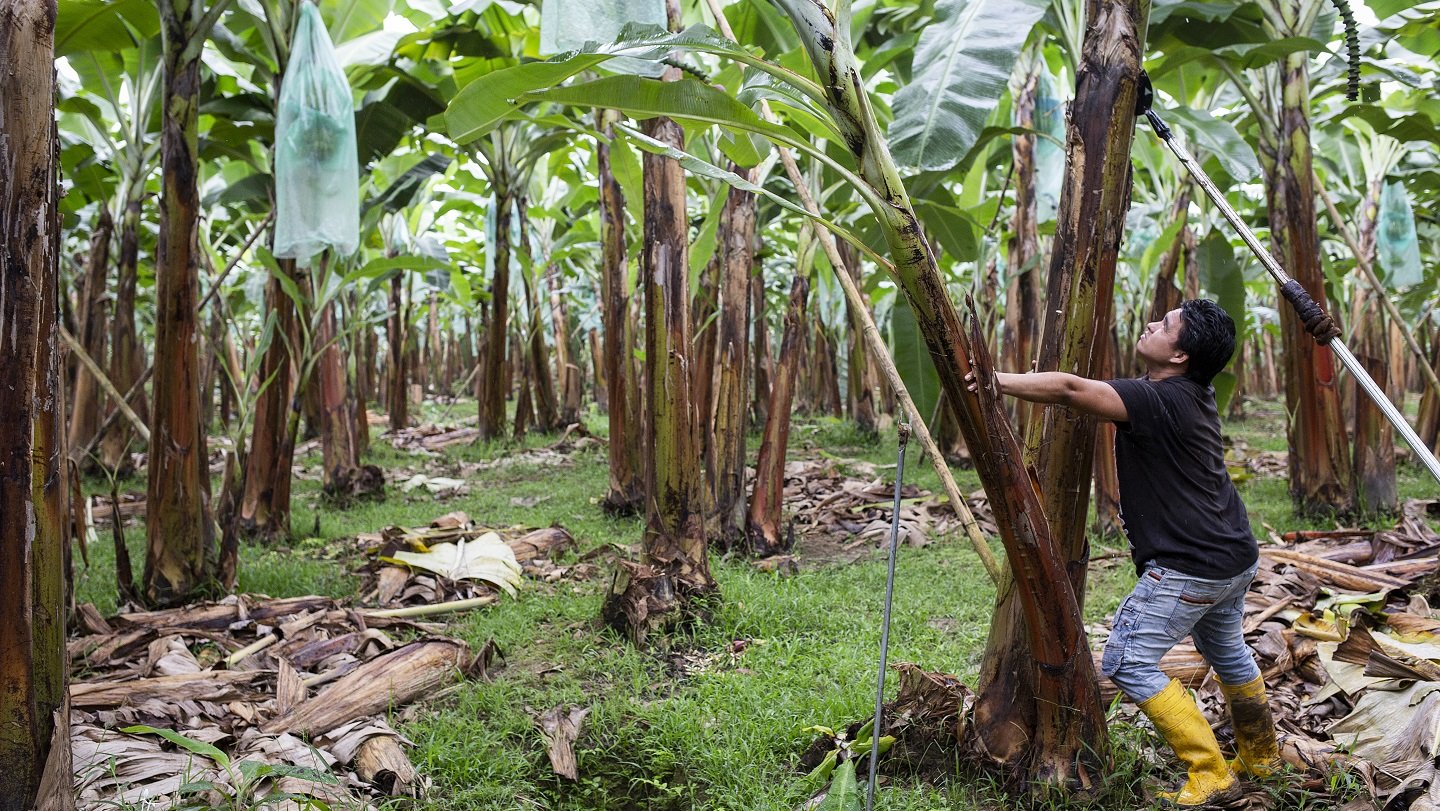Cooperative Bananas, in Dollars and Cents
In Part One of this series on Latin American banana production in the shadow of TR4, we shared an introduction to Fusarium Wilt Tropical Race 4, a fungal strain that has the potential to wreak havoc on the Latin American banana industry. In this installment, Part Two, we explore the particular challenges that small-scale farmers face as they employ TR4 prevention techniques.
Various strategies can reduce a farm’s risk of contamination
Fusarium Wilt Tropical Race 4, a fungal strain that has destroyed hundreds of acres of bananas, and for which there is currently no known remedy, was found on farms in Colombia last August. Since then, governments, research groups, and producers have worked tirelessly to strengthen infrastructure and prevent the disease from spreading. Prevention is both resource- and labor-intensive. Some internationally accepted strategies include:
Controlling entrances and exits to farms
Installing disinfecting footbaths at points of entry
Creating physical barriers, both living (i.e. bushes and shrubs) and material at the perimeter of each farm to prevent unauthorized entry
Providing special boots for workers and visitors
Offering specialist training for farmers and workers
These steps are expensive and cumbersome for large plantations, but the challenge grows exponentially for the thousands of small-scale banana producers that operate in Ecuador and Peru. Small banana farms are often immersed in communities, bordering tropical homegardens or other farms. That makes marking boundaries and controlling entry-and-exit points especially important for each individual farm. How could a farmer with one hectare of land – or her hundreds of neighbors with similar-sized plots – access the resources needed to establish effective controls?
This is where farmer cooperatives play a critical role in limiting the spread of TR4. With the help of regional and international agricultural organizations, farmer cooperatives can provide their members with the information and resources crucial to limiting their exposure to TR4. In some banana producing regions, different co-ops are collaborating to build preventive systems and educational programs.
CEPIBO: a cooperative case study
One such example is CEPIBO, a 329-member small-scale farmer banana cooperative in Piura, Peru, that has worked with Equal Exchange for 7 years. Since July 2019, CEPIBO has been a member of the area’s Organic Banana Subsector, in collaboration with Piura’s Chamber of Commerce and other regional cooperatives. Together, these organizations have organized farmer training sessions and developed a pilot program to hone prevention methods.
The pilot plot, officially unveiled in October 2019, is made up of five hectares (a little over 12 acres), containing land owned by 11 different small-scale producers. It is designed to effectively prepare farmers under constrained resources, experimenting with TR4 prevention methods and acting as a teaching tool for farmers who are trying to establish controls on their own farms. Its perimeter is enclosed by shrubbery, called a living barrier, and reinforced with a Raschel netting fence. The plot has a new locked entrance made of cane with foot baths for disinfecting boots. In the development of the pilot, CEPIBO’s goal is to find the most cost-effective prevention methods for small-scale farmers to replicate before TR4 spreads throughout Latin America.
CEPIBO and neighboring producer organizations are working to develop TR4 prevention test plots.
Small-scale farmers face disproportionately high costs
Who will foot the bill for extra costs like these, considering the already-high costs for banana farming communities? In CEPIBO’s case, the organization will offer to help with labor costs, training, and shrubs, while the landowners will need to purchase the raw construction materials. In other words, CEPIBO will need to rely on its Fairtrade premium funding – $1 earned per 40-lb box – and additional funds contributed by farmer members, to cover these additional costs.
Those of us downstream in the supply chain, such as importers, distributors, retailers, and consumers, need to interrogate our own role in this effort, and consider how the price we pay may affect farmers’ ability to prepare for, and prevent, the worst-case scenario. Where do we stand in the fight to protect not just a beloved fruit, but the livelihoods of thousands of farmers?
In Part Three, we’ll share some strategies for you to stay effectively engaged in TR4 prevention, in solidarity with the small-scale farmers leading the charge.
References:
FAO. 2020. Tropical Race 4. World Banana Forum. http://www.fao.org/world-banana-forum/fusariumtr4/en/
Hicks, Angelica. 2019. Cooperative bananas, in dollars and cents. Equal Exchange. https://blog.equalexchange.coop/cooperative-bananas-in-dollars-and-cents/
Hicks, Angelica. 2019. Unconventional bananas in Peru: an interview with Julio Oscar Gallegos Herrera-Rambla. Equal Exchange.




